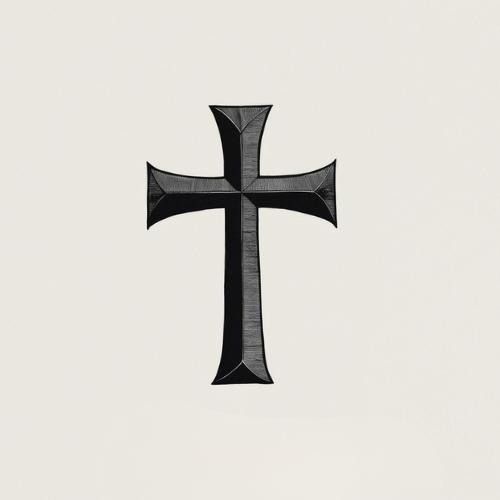Monadology and the Gödel–Scott System
This article is based on Appendix A of Gödel’s God Theorem.
Writing Gödel’s God Theorem made me realize that the Gödel–Scott System (GSS) is inherently monadological. Indeed, Gödel himself states in Hao Wang’s A Logical Journey: From Gödel to Philosophy (1996) that his philosophy is essentially a Leibnizian monadology, in which God is the central monad. Without a monadology, GSS is merely logical legerdemain.
However, I do not accept Leibniz’s monadology in toto. Nor do I know in sufficient detail what Gödel’s own monadology looks like. Therefore, I have been writing my own monadology. This is the first post in a series setting forth those ideas.
In a nutshell, the monadology I am developing is a kind of synthesis between Leibniz and Nicholas of Cusa—leaning toward Leibniz on contingent existence and toward Cusa on God. I diverge sharply from Leibniz’s “best of all possible worlds” thesis. While I believe that God originally created the best of all possible worlds, I do not believe that the world we currently inhabit is that world. As Scripture teaches, the world in which we live is, due to man’s sin, fallen. More later.
What Are Monads?
Monads are spatially simple substances, where “spatially simple” means “without parts.”
The existence of systems implies the existence of monads. You might think this implication follows from the idea that there must ultimately be atomic objects that enter into and form systems—but that is not so. Of course, science speaks of “atoms,” yet these objects are known to be divisible; they are not the atoms of the ancient atomists. In fact, I believe that matter is not only infinitely divisible but, in fact, infinitely divided. In other words, there are no true material atoms.
Why, then, do systems imply monads? Because only a true unity can unite. Without monads—that is, without true unities—there would be no coherence in the idea that a collection of parts and relations could form a single, unified system. A system forms a unit insofar as it has a governing monad.1
Properties of Monads
Since monads have no parts, they have neither form nor figure nor extension; they are indivisible, immaterial existential unities. It follows, therefore, that monads do not exist in spacetime. Indeed, Leibniz posits a relativistic theory of spacetime as an emergent property of monadic perception.
Leibnizian relativity is not a forerunner of Einsteinian relativity. For one thing, Leibnizian relativity is far more elaborate, encompassing not only the contingent world but also the infinite manifold of possible worlds. More later.
Monads are immaterial, yet ultimately material objects emerge from them. However, this emergence is not by aggregation. An apt analogy is the continuum, which contains an infinitude of points but is not a mere compounding of points.
Creation and Destruction
Since natural death occurs part by part, monads, having no parts, are not subject to it. God can, however, instantaneously annihilate monads.
Since natural evolutionary formation occurs part by part, monads, having no parts, are not subject to it. God can, however, instantaneously create monads from nothing.
Hence natural death and annihilation are not the same. Similarly, formation is not creation.
Causal Independence
Since monads have no parts, there is nothing in them to excite, direct, increase, decrease, or in any other way alter. In other words, monads are impervious to the causal influence of other created beings. As Leibniz puts it, monads are “windowless.”
Nonexistent objects have no properties—not even the property of nonexistence. Since monads exist, they have properties. However, monads, being without parts, have no numerical–spatial properties. Accordingly, monads have purely qualitative properties. Indeed, a monad is a qualitative multiplicity within a numerical–spatial unity.
Identity of Monads
Not only do monads possess qualitative properties, but no two monads are identical. Given two arbitrary monads m1 and m2, m1 ≠ m2. The assumption that m1 = m2 contradicts the Principle of Sufficient Reason: if two monads were identical, there would be no sufficient reason for their placement within the overall scheme of things.2
- This thesis relates to my earlier work on the concept of system boundary. See Cavallo, A. M. (2012). On Mario Bunge’s Definition of System and System Boundary. Science & Education, 21, 1595–1599. https://doi.org/10.1007/s11191-011-9365-0 ↩
- This notion of identity pivots on Leibniz’s “Identity of Indiscernibles.” ↩
References
- Cavallo, A. M. (2012). On Mario Bunge’s Definition of System and System Boundary. Science & Education, 21, 1595–1599. https://doi.org/10.1007/s11191-011-9365-0
- Cavallo, A. M. (2020). Gödel’s God Theorem. Jonah Publishing. (See Appendix A.) Available at: https://andrewcavallo.com/products/godel-s-god-theorem
- Wang, H. (1996). A Logical Journey: From Gödel to Philosophy. MIT Press.
Subscribe
Stay updated on new articles, projects, and insights—go to the subscribe box at the bottom of this page and enter your email now.
